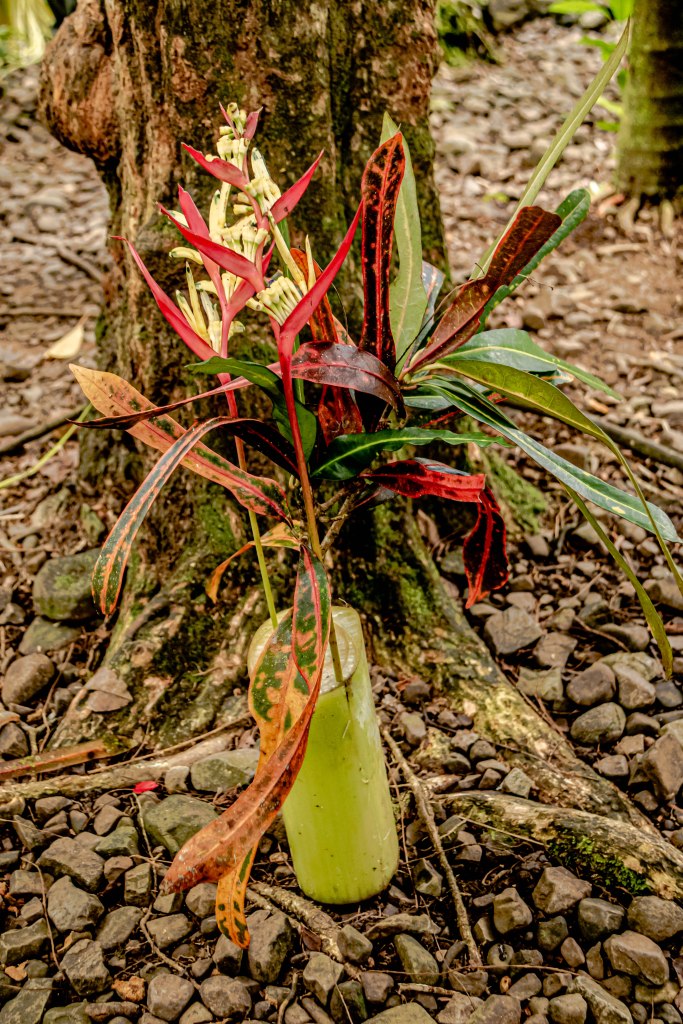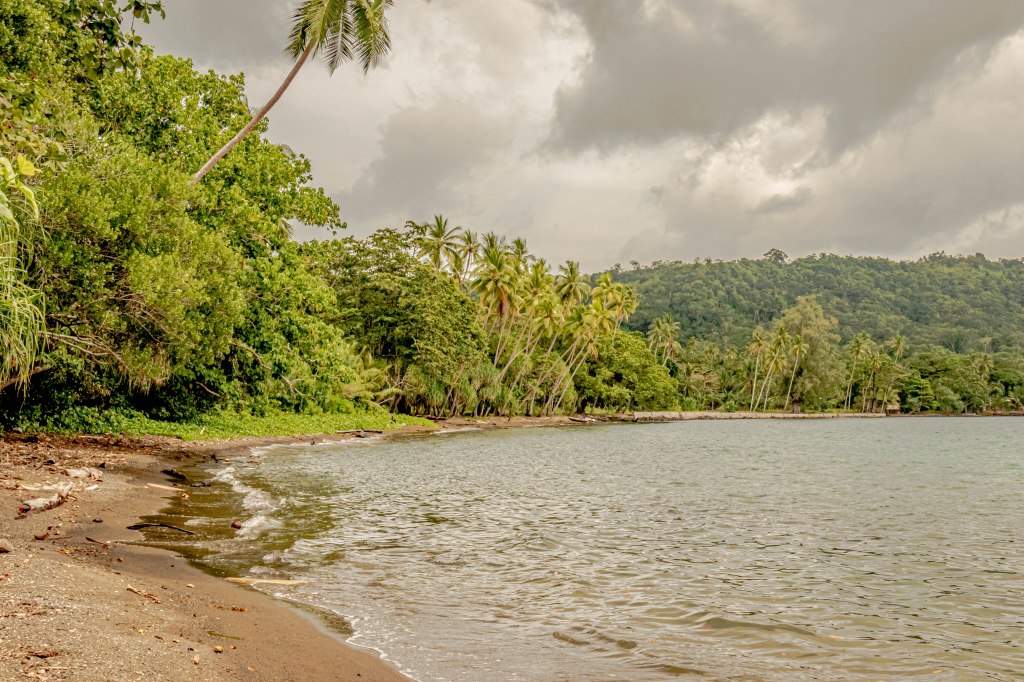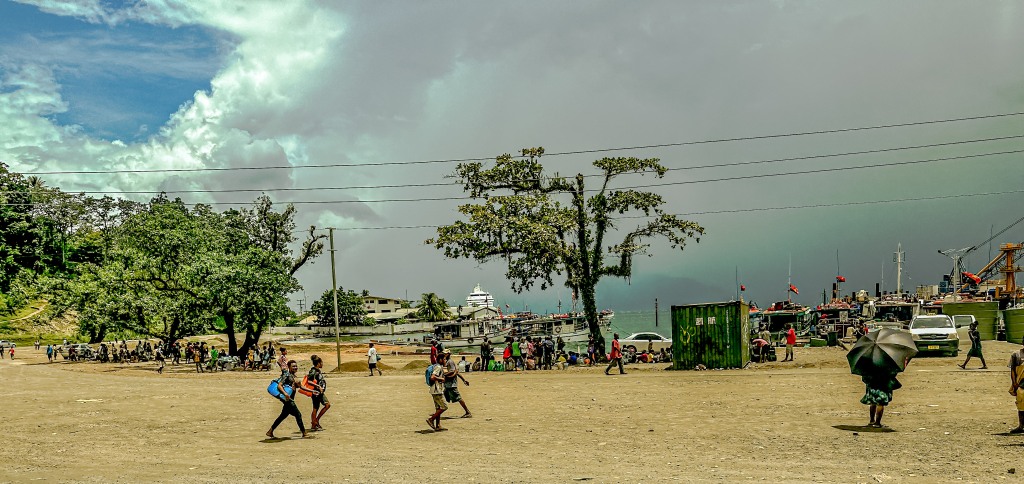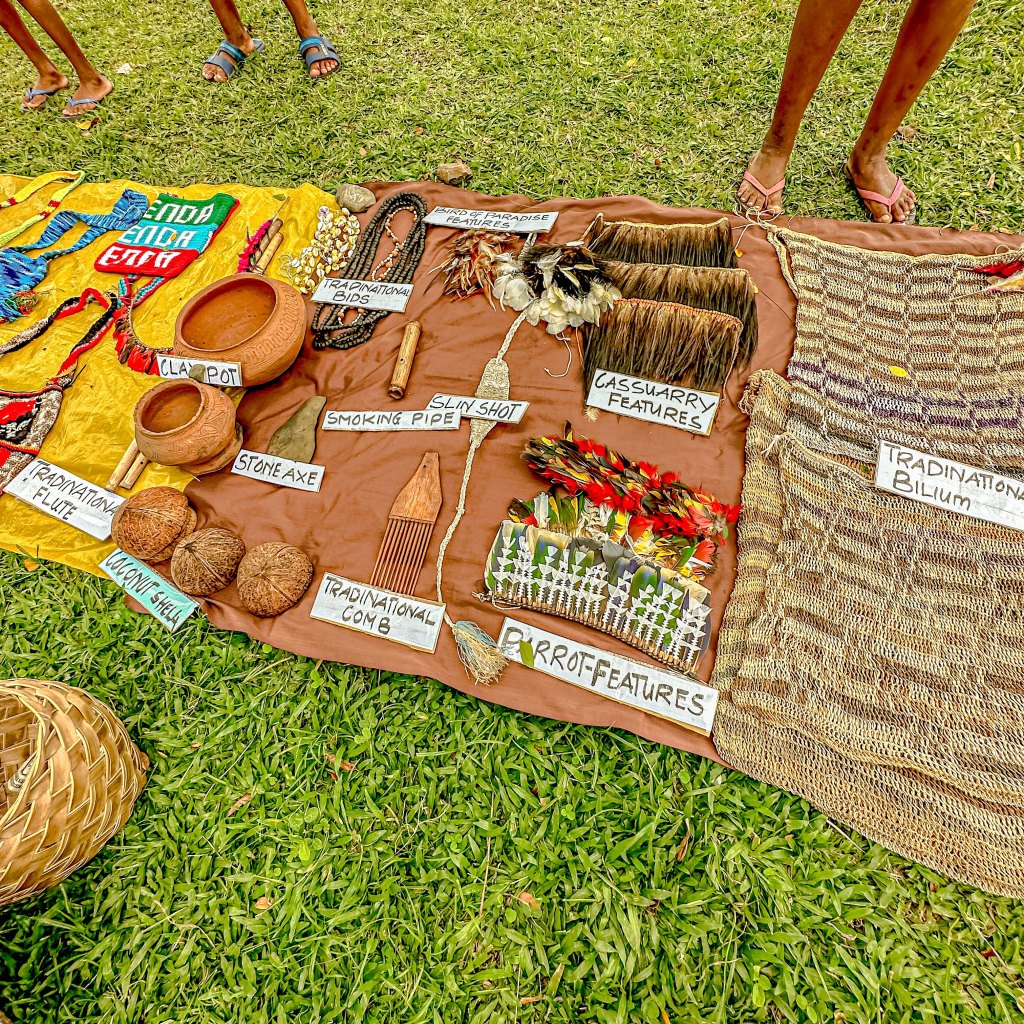Feb. 18, 2023:


How do I begin to describe the island nation which is Papua New Guinea?! For one thing, their nation is part of the larger island of New Guinea, which lies just to the north of Australia, and is the second-largest island in the world (after Greenland). In many ways, it is a land which time forgot, but which is also striving to take its place in the community of nations.

The peoples of Papua New Guinea first began arriving there between 45,000 and 50,000 years ago. They were part of the dispersion of peoples from what is today Africa, but was then part of the super-continent we call Pangea. They are now believed to have reached Australia between 60,000-70,000 years ago. However, the sea levels rose about 10,000 years ago, isolating New Guinea. Its terrain is so diverse that it features numerous microclimates which range from the coastal areas up to peaks reaching over 14,000 feet, where it snows each winter.
There are over 500 islands in the archipelago of Papua New Guinea, but only 160 are inhabited. Western explorers did not “discover” the islands until 1526, when Spanish/Portuguese explorer Menezes named their land Papua, which was Malay for “frizzled hair”. Of course, eastern explorers had made contact with the island as early as 5,000 years ago. Spanish explorer Ortiz de Retez named the island New Guinea, because he thought the natives resembled the inhabitants of the African Guinea coast. At the time of this first contact with Westerners, the inhabitants of New Guinea were, archeologically-speaking, living in the Stone Age; not having progressed to using metal implements.
The next contacts with Western explorers came in the 18th century, when both Captain Cook and Captain Bligh made contact. The British set up a trading post on the island and briefly settled troops on the island. Because the island was close to its territorial outposts in Indonesia, the Dutch also set up an outpost on the western end of the island. However, Britain lost interest, and their settlements were largely abandoned. In the 19th century, the Germans had a plan to establish outposts throughout the South Pacific, and in 1884, Germany annexed settlements in northern New Guinea. The British interest in the island was revived, and in 1874, the British sent Captain John Moresby to survey the coastline of the entire island. Shortly thereafter, The British Empire sent out Sir Henry Wickham to collect plant samples. He sent back rubber seeds, which were cultivated by the Royal Botanical Society at Kew Gardens, and which succeeded in crushing the Brazilian monopoly on the rubber trade.
At the dawn of World War I, the island of New Guinea was divided into ownership by three imperial powers: the Netherlands, England, and Germany. Following World War I, colonial ownership of the island was split between the Netherlands and the British, with the British ceding control over the former German portion to the Australians.

However, as you probably recall from our post on Vanuatu, in 1936, the Japanese began their imperial conquest movement into the South Pacific. By early 1942, the Japanese had taken many of their strategic targets in the South Pacific, including the Philippines, the Solomon islands, and much of New Guinea, including the Dutch portion, the outlying islands, the Australian-administered Territory of New Guinea, and the Australian Territory of New Guinea.

In short, only the southeastern coastal areas were free of the Japanese, whose ultimate goal was to capture the capital port city of Moresby, and establish airfields and supply ports from which they could attack Australia. The campaign for New Guinea had one of the highest casualty counts in the South Pacific campaign, with over 200,000 Japanese, Australian, New Zealand, and American forces killed. The Australian portion of the campaign was called the Kokoda Track campaign, and it was a brutal attack fought from the south over the mountains and dense jungle in New Guinea. The American forces based in Vanuatu overseen by General MacArthur helped turn the course of the war after the Battle of the Coral Sea. One of the most pivotal battles in this campaign was the Battle of Milne Bay right here in Alotau where we are moored.

Papua New Guinea became independent from England in 1975, although it is still a member of the British Commonwealth of Nations. It is a constitutional monarchy whose head of state today is King Charles III of England. There is a Governor General of the nation, as well as a Prime Minister. PNG is one of the most linguistically diverse countries in the world, with over 839 recognized languages. However, there are three official languages: Tok Pisin (which is a kind of pidgin English), English, and Hiri Motu. Virtually everyone speaks English, and we were surprised by how fluent in English the children we met were. PNG’s ties with Australia remain extremely strong. Today, the people of PNG are somewhat suspicious of the expansionist tendencies of the Chinese, and are fighting to maintain their independence by joining numerous international coalitions.

Our explorations today will take us to two different villages so we can learn about their traditional lifestyles and culture. Unlike many countries in the modern world, the majority of the inhabitants of Papua New Guinea still live in rural areas. Beyond that, over 40% still live a subsistence farming lifestyle, with no use of cash whatsoever. Most villages do not have running water or electricity today. As part of their traditions, the people strongly identified with the warrior lifestyle, and neighboring tribes warred frequently with each other. Cannibalism was practiced at least until the end of World War II, and although it is said it has been completely eradicated, there are still some tribal communities so remote in the jungled hill country that it is impossible to know.
Likewise, the actual population of the country is subject to a great deal of speculation, with the official count at nearly 9,000,000, but some estimate upwards of 17,000,000 people live there.




We really enjoyed our visits to the two communities, and especially our talks with the children in each. We were only the second cruise ship which had visited since the pandemic, and the villagers were incredibly grateful for our visits. In these types of situations, it is easy to speculate that the visits are all a staged show, but we didn’t see any evidence that daily life was any different than as it was prepared for us.


The first village was called Taludadani, and after fording a river where the only bridge was knocked out by an over-laden truck (apparently quite some time ago, we had to go offroad and drive up another stream to get to the village. They had prepared several activities to show us. We first saw some of the women of the village preparing a traditional meal, which mostly consisted of fruit and vegetables.









Although we saw a couple of pigs running around, and fishing is a way of life all along the coast, there does not seem to be a great deal of protein in the PNG diet. Portuguese traders introduced the yam in the 18th century, and it has rapidly become the predominant foodstuff of the islands, almost completely replacing taro.



Then one of the young boys showed us how to climb a palm tree to harvest the betel nuts. Most islanders chew the betel nut, which is mixed with coral lime, which turns it red and gives it a mild narcotic effect. The village headman said that when they are tired, instead of drinking coffee, they chew the betel nut. Most of the adults we met had the tell-tale red teeth of habitual betel nut consumer.




This village recognizes the potential benefits in tourism, and is the process of building simple huts to serve as hostel-type accommodations for the backpackers and photographers who are now coming more frequently to the islands. There was a young girl and boy dressed in traditional attire (she was 12 and he was 14). We were told that they were of the age when islanders had traditionally gotten married.








The second village we visited was located on the sea shore, and we were greeted by the young people of the village dressed in their village’s version of traditional dress, while they sang and danced for us. These kids were aged about age 8 to late teens, and not a one of them (or the villagers either) had a cell phone in sight.




The women of the village had prepared a beautiful spread of fresh fruit for us, and some were cooking some vegetables with cocnut milk over an open fire. They also had fresh coconuts, which they opened so we could drink the juice. Everyone learned something from the pandemic, as we were each given a plastic-wrapped straw to use. The young boys demonstrated their paddling skills by taking their canoes out in the bay. One of the village men then showed us how to start a fire without any matches. Most of their implements are still hand-carved from wood. Then the young people danced some more for us, and the boys made a great show of trying to scare us with their spears. Jim accommodated by acting surprised each time they jumped at him.













We returned to town, and visited the war memorial to those lost in the Battle of Milne Bay in World War II. The downtown of Alotau wasn’t very large, but it’s natural harbor makes it an ideal ferry port for all the ferries leaving and arriving constantly from the outlying islands. We also got to see the craft market, where the residents displayed their lovely wood carvings.




Finally, we drove a little way above the town so we could enjoy the panoramic views. An enterprising woman had set up a display of some traditional clothing and feather headpieces, and we contributed to her outdoor museum.



Undoubtedly, there’s a lot more to this country than we were able to absorb in our short time here. But we left feeling that PNG really is a remarkable place!





